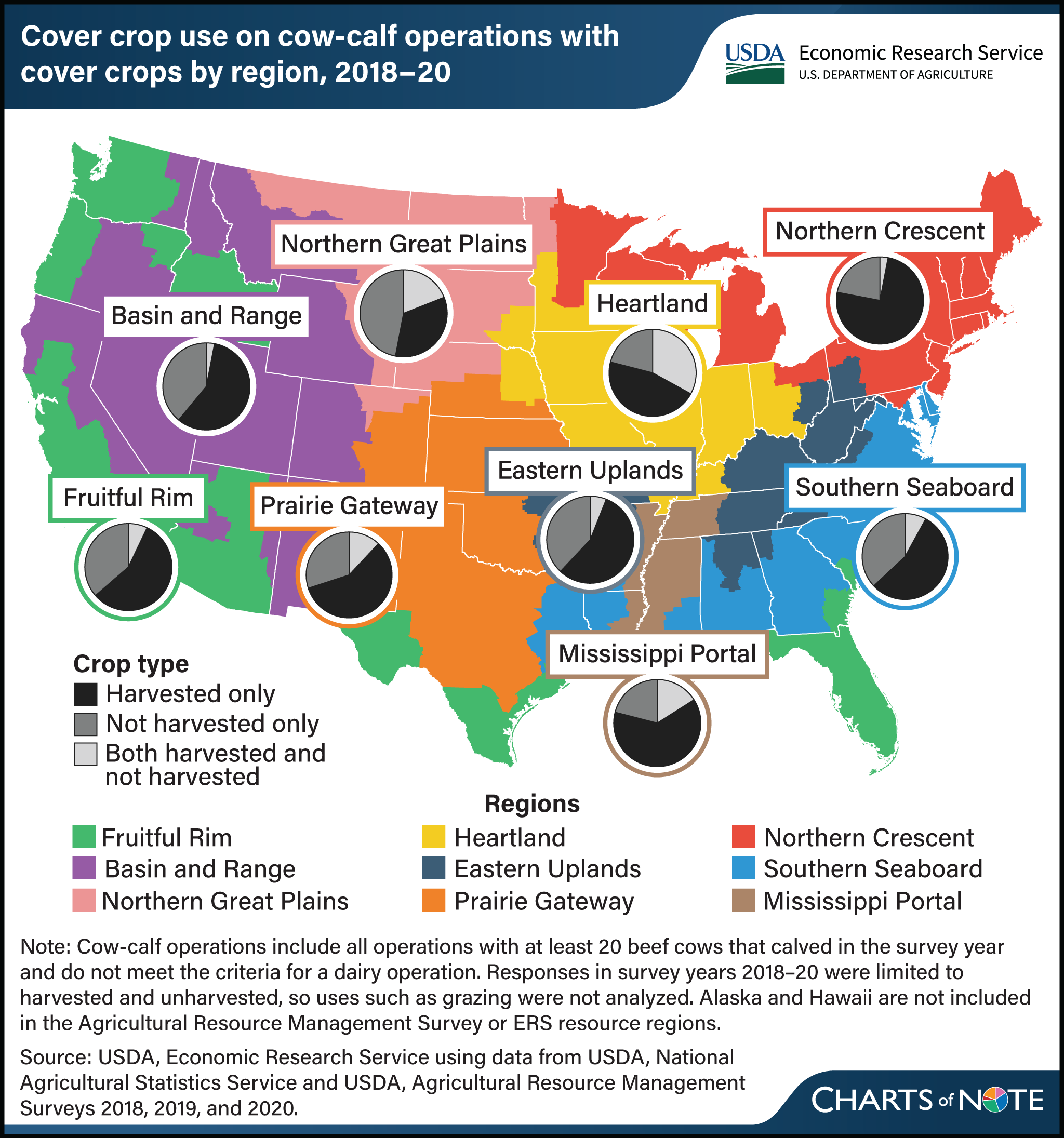Cover crop harvesting by cow-calf producers varies by region
- by Maria Bowman
- 8/26/2024

Researchers with USDA, Economic Research Service (ERS) examined cover crop use by cow-calf operations and found that more than half of producers who planted cover crops reported harvesting at least some of them. Harvesting cover crops on cow-calf operations is more likely in the Mississippi Portal and Northern Crescent regions and less likely in the Heartland region. Cow-calf operations might plant cover crops to improve soil quality on their cropland and then use the growing crop to provide feed for their cattle either by grazing the growing cover crop or harvesting the cover crop as haylage or silage to feed cattle later. In 2018–20, USDA’s Agricultural Resource Management Survey (ARMS) asked producers how many acres of cover crops they harvested for forage or other on-farm use and how many acres of cover crops were not harvested. Data from the 2017 Census of Agriculture showed that about 11 percent of cow-calf operations reported using cover crops, with the highest rates of cover crop use occurring in the Northern Crescent and Heartland regions (18 percent of operations in both regions). Information on cover crop practices on cattle operations can be found in the ERS report Cover Crops on Livestock Operations: Potential for Expansion in the United States, published in May 2024.

